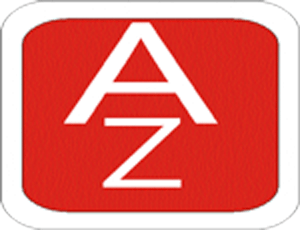
How to Find Trusted Online Resources and Services
In today’s digital landscape, it is essential to know How to Find Trusted Online Casinos Worldwide Mostbet регистрация how to find trusted online resources and services. As the internet continues to grow, so do the risks associated with online transactions and information gathering. This article will guide you through credible methods and tools that can be employed to ensure a safe and reliable online experience.
Understanding Online Credibility
The first step in navigating the internet safely is to understand the concept of credibility. Online credibility refers to the trustworthiness of a website or service. When you encounter a website or an online service, assess its credibility by considering several factors:
1. Look for HTTPS
One of the simplest ways to check if a website is secure is by looking at its URL. Websites that use HTTPS (Hypertext Transfer Protocol Secure) have a layer of encryption to protect any data transferred. Look for a small padlock icon in the address bar, which signifies that the connection is secure.
2. Examine the Domain Name
Be cautious with websites that use strange domain names or those that mimic well-known brands. Phishing scams often use similar-looking URLs to trick users into providing personal information. Always double-check the domain name for subtle spelling errors.
3. Check for Contact Information
Trusted websites typically provide clear contact information. Look for an “About Us” section, customer service numbers, or email addresses. If a site lacks contact information or only provides a web form, it may be a warning sign.
4. Read Reviews and Feedback
Before engaging with a new online service, take a moment to read reviews from other users. Websites like Trustpilot, Google Reviews, and social media platforms can provide helpful insights into the experiences of others. A high volume of negative feedback or unresolved complaints can be red flags.

Utilizing Online Tools and Resources
In addition to manual checking, there are various online tools and resources designed to help you assess the credibility of websites and online services. Here are some effective options:
1. Website Reputation Checkers
Websites like Norton Safe Web, McAfee WebAdvisor, and Sucuri SiteCheck allow you to enter any URL and receive a safety report. These tools analyze the website for known threats, making it easier for you to identify potential risks.
2. Browser Extensions
Consider installing browser extensions that provide real-time safety ratings for websites. Tools like WOT (Web of Trust) or Bitdefender TrafficLight offer valuable insights directly in your browser while you browse.
3. Privacy Policies and Terms of Service
Reputable websites often have detailed privacy policies and terms of service that explain how your data will be used and protected. Before using a service, take the time to read through these documents to understand your rights and the website’s obligations.
Exercising Caution
Even with the best tools and resources, caution should always be exercised. Here are some additional tips to ensure your online safety:
1. Use Strong Passwords
When creating accounts on online platforms, use strong, unique passwords. Avoid using easily guessed information, such as birthdays or names. Additionally, consider using a password manager to help keep track of your credentials securely.
2. Enable Two-Factor Authentication

Whenever possible, enable two-factor authentication (2FA) for your online accounts. This adds an extra layer of security, requiring not only your password but also a second verification method, such as a text message or an authentication app.
3. Be Wary of Public Wi-Fi
Public Wi-Fi networks, such as those found in cafes or airports, are often not secure. Avoid conducting sensitive transactions, like online banking, while connected to public Wi-Fi. If necessary, use a VPN (Virtual Private Network) for added security.
Maintaining Privacy Online
Your privacy is paramount, especially when interacting with online services. Here are several ways to protect your personal information:
1. Limit Personal Information Sharing
Be mindful of how much personal information you share online, especially on social media platforms. Review your privacy settings and restrict access to your information to only those you trust.
2. Use Privacy-Focused Browsers
Consider using browsers that focus on user privacy, such as Brave or Mozilla Firefox with privacy extensions. These options often come with built-in features to block trackers and advertisements that collect your data.
3. Regularly Monitor Your Accounts
Regularly check your online accounts and bank statements for unauthorized transactions. This practice will help you quickly identify any suspicious activity and take action if necessary.
Conclusion
Finding trusted online resources and services may seem daunting at first, but by following the strategies outlined in this article, you can significantly reduce your risks. From checking for HTTPS to utilizing online tools, maintaining caution, and protecting your privacy, each step contributes to a safer online experience. Stay informed and vigilant, and you’ll navigate the internet with confidence.
